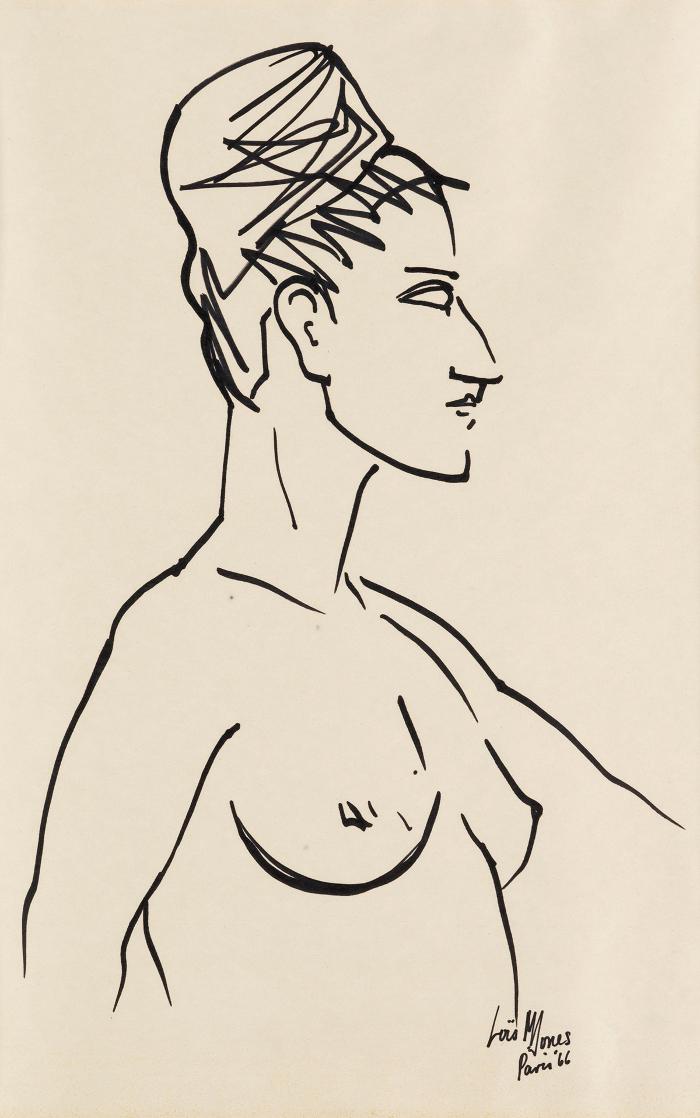Lisa
1966 (Date manufactured/created)
pen, ink, wash
wove paper, drawing
25 in. H
X
19 1/2 in. W
Signed, dated and inscribed "Paris" in ink lower right. For more than fifty years, Jones had a successful career as a painter, teacher, book illustrator, and textile designer. Her first experience with racial discrimination occurred in 1927 when she applied for a graduate assistantship at Boston Museum School of Fine Arts. Her application was flatly rejected. The next year she was recruited by the Palmer Memorial Institute in North Carolina to head the art department. After two years in North Carolina where she experienced segregation first-hand, Jones left Palmer Memorial and joined the Fine Arts Department at Howard University in Washington DC where she remained for forty-seven years until her retirement. In 1937 Jones received a fellowship to study in France; she went to Paris and identified from the start that she felt a spiritual affinity with the French people and the nation. She continued to visit France every year afterward. Art historian Regina Perry identified Jones as the only African American female painter of the 1930s and 40s to achieve fame abroad. The 1930s saw her drawing and painting realist portraits of African-Americans and illustrating books. This art, Barry Gaither, art historian and longtime friend of the artist, writes was part of the “New Negro” movement’s effort at creating “sympathetic representations of black American experience and reclamation of African heritage.” The drawing, Lisa, produced in the 1960s shows a shift in style as her career progressed. Here, in a three-quarter profile, the picture of Lisa is accomplished with just a few, loose strokes that provide both physical type and character disposition.
Museum Purchase, Acquisitions Fund, 2020
2020.1.1
